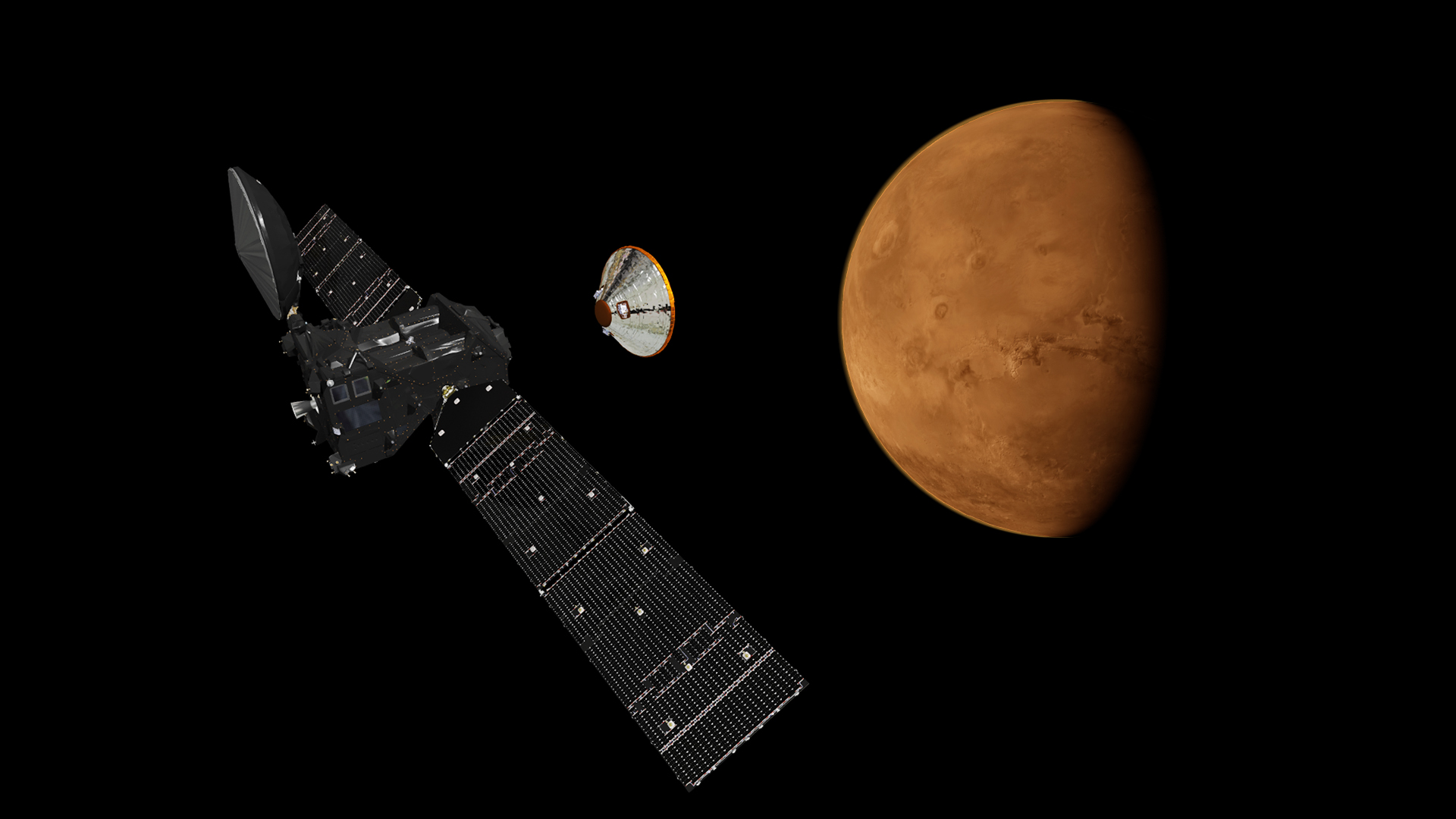
Artist’s impression depicting the separation of the ExoMars 2016 entry, descent and landing demonstrator module, named Schiaparelli, from the Trace Gas Orbiter, and heading for Mars.
Copyright: ESA/ATG medialab
This week, ESA’s ExoMars has just a single chance to get captured by Mars’ gravity. The spacecraft and the mission controllers who will make it so are ready for arrival.
The ExoMars Trace Gas Orbiter is on a multiyear mission to understand the methane and other gases in Mars’ atmosphere at low levels and could be evidence for possible biological or geological activity.
The 3.7 tonne mothership is carrying the 577 kg Schiaparelli lander that will test key technologies in preparation for ESA’s 2020 rover mission.
The pair have almost completed their 496 million km journey, and are now speeding towards a critical stage: releasing the lander on Sunday and the lander’s descent and touchdown next Wednesday, at the same time as the main craft begins circling the planet.
“They are now on a high-speed collision course with Mars, which is fine for the lander – it will stay on this path to make its controlled landing,” says flight director Michel Denis at mission control in Darmstadt, Germany.
“However, to get the mothership into orbit, we must make a small but vital adjustment on 17 October to ensure it avoids the planet. And on 19 October it must fire its engine at a precise time for 139 minutes to brake into orbit.
“We get just a single chance.”

